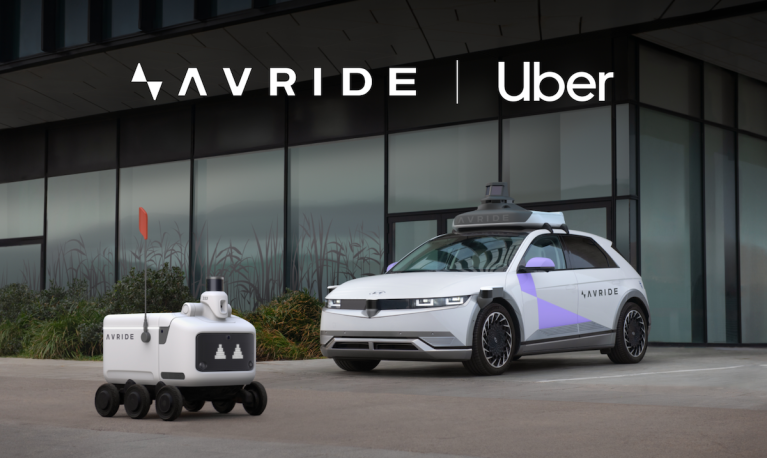
Uber has launched a partnership with delivery robot/autonomous vehicle maker Avirde.
The collaboration will launch in the coming weeks in Austin, letting Uber Eats customers get their food delivered by Avride’s sidewalk robots, per a Thursday (Oct. 3) press release. It will then expand to Dallas and Jersey City later this year.
The ride-hailing side of the partnership is expected to launch in Dallas sometime in 2025, according to the release. With that launch, customers who request a delivery or ride from Uber Eats or Uber will get the option of having that trip or order fulfilled by Avride’s robots or vehicles.
“Avride has a unique advantage from developing and operating both autonomous cars and delivery robots that leverage mutually enhancing technologies,” Uber said in the release. “The company’s delivery robots are already making commercial deliveries in the U.S. and South Korea, while its autonomous cars are currently being tested on public roads.”
Dmitry Polishchuk, CEO of Avride, said the company plans to expand the total fleet of Avride robots operating within Uber Eats to the hundreds next year, followed by the launch of the company’s robotaxi service.
PYMNTS wrote about the rise of robotaxis last month, saying they embody the “ideal” of fully autonomous vehicles in a shared, on-demand economy. In theory, these vehicles could revolutionize transportation in urban areas by providing a convenient, and less costly alternative to car ownership.
“Robotaxis are also commonly seen as a solution to the ‘first-mile/last-mile’ problem in public transportation, providing a link between mass transit hubs and final destinations,” that report said. “This could lead to increased public transit use, reduced dependence on personal vehicles, and a more sustainable urban environment.”
But in spite of the optimism around robotaxis, the journey to full autonomy has been anything but smooth. The development of self-driving technology is a complex and costly endeavor, requiring advancements in artificial intelligence, sensor technology, and vehicle-to-everything (V2X) communication.
“While companies like Waymo have achieved milestones — such as launching a fully autonomous ride-hailing service in select areas — these services are still limited in scope and geography,” PYMNTS wrote.
Elsewhere in this space, PYMNTS spoke with experts who said the expansion of eCommerce has fueled a search for more efficient and cost-effective delivery solutions, such as robots.
“Lower costs for robots and other supply chain automation tools ensures smaller and niche carriers and third-party logistics can offer solutions that compete with the mega spend of the largest players,” Keith Biondo, publisher of Inbound Logistics magazine, told PYMNTS. “That development opens up the latest solutions for direct-to-consumer companies of all sizes, including startups and new entrants, to speed and reduce inventory and serve customers fast while keeping fulfillment costs low.”